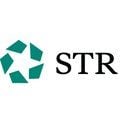U.S. Hotels - August 2022 Commentary
August 2022 Top-Line Metrics (percentage change from July 2019)
- Occupancy: 66.5% (-6.7%)
- Average daily rate (ADR): US$151.49 (+14.0%)
- Revenue per available room (RevPAR): US$100.67 (+6.3%)
Key points from the month:
- August marked the second consecutive month-over-month occupancy decline.
- ADR declined MoM to $151.49 but was still 14% higher than August 2019 in nominal terms. Real ADR was about 1% below the pre-pandemic comparable.
- Weekday occupancy indexes remained stagnant as schools restarted, while weekend and shoulder occupancy indexes declined for the second consecutive month.
- Strong group demand helped push Group recovery ahead of Transient recovery for the first time during the pandemic-era.
- While the volume of rooms in construction continue to decline year over year, the pipeline looks to be plateauing at current levels.
Chain Scales
Compared with 2019, all scales reported a decline in occupancy but a double-digit increase in ADR, and only upper upscale reported a negative RevPAR change. The RevPAR decline for the upper upscale segment came because of a combination of supply growth (+4.7%), lower demand (-9.2%) and limited revenue growth (+1.6%). Despite less supply for economy and independents (-4.2% and -1.5% respectively), high demand declines (-7.6% and -8.5%) kept occupancy changes in negative territory for those segments. Luxury rate growth continues to outperform (+23.0%).
Segmentation
Group demand recovery surpassed transient demand recovery as groups continue to perform well while transient has started to soften.
If you break demand out into day-of-week buckets, summer weekends were hardest hit.
Weekday demand is still lacking, but that has been the theme throughout the pandemic. A drop in transient weekend levels presents more concern.
Markets
Looking at market-level performance data, summer demand shifted away from rural and coastal destinations and back into cities to some extent as evident in May and June weekends below. July and August did not follow the same pattern, and weekends dipped back down. Shoulder occupancy trends mimic the weekends, as longer weekends have characterized leisure demand through the later stages of the pandemic
Rates have strengthened significantly, and the question has been, are hoteliers able to increase rates over inflation? “Other” markets are, whereas the Top 25 Markets are not. Throughout the pandemic, travelers have seemed resilient to these higher rates, with reasoning ranging from excess savings and pent-up demand to the general higher-income status of most travelers.
Weekend rate growth has been the strongest, both in the Top 25 Markets and nationally, as higher demand helps drive higher rates.
It costed an average of $176 for a Friday or Saturday night stay in a Top 25 Market in August.
Moving out of the Top 25 Markets, the relative price difference between the two market types has diminished this year.
Year to date, Top 25 Market ADR was roughly 24% higher than all other market ADR compared with +33% in 2019. Due to all other market rates growing at a faster pace, the gap is closing.
Overall, total U.S. daily data shows that September is looking much stronger. We understand that sentiments towards the last two months and the upcoming month will differ. While a lift in performance is promising, we should continue to expect ups and downs as the recovery continues.
Monthly P&L
U.S. hotel gross operating profit per available room (GOPPAR) dropped from the previous month and fell below 2019 levels for the first time in four months. Labor costs was the only metric that moved closer to 2019 levels.
GOPPAR: US$64.26
TRevPAR: US$194.09
EBITDA PAR: US$43.65
LPAR (Labor Costs): US$67.64
Each of the Top 25 Markets have seen profitability improvements. Phoenix reported the highest GOPPAR index at 240% of 2019 levels, followed by Miami (187%). New Orleans and San Francisco were at the lower end of GOPPAR recovery, at 31% and 47% of 2019 levels, respectively.
Latest Weekly Data
Occupancy during the week of 18-24 September topped 70% - an eight-week high. Read more in our latest Market Recovery Monitor.
About STR
STR provides premium data benchmarking, analytics and marketplace insights for the global hospitality industry. Founded in 1985, STR maintains a presence in 15 countries with a corporate North American headquarters in Hendersonville, Tennessee, an international headquarters in London, and an Asia Pacific headquarters in Singapore. STR was acquired in October 2019 by CoStar Group, Inc. (NASDAQ: CSGP), the leading provider of commercial real estate information, analytics and online marketplaces. For more information, please visit str.com and costargroup.com.
















